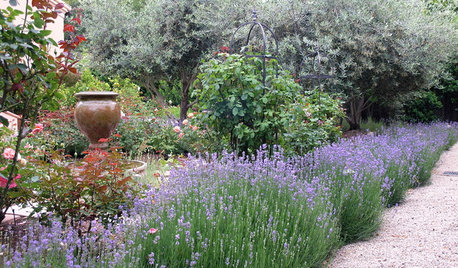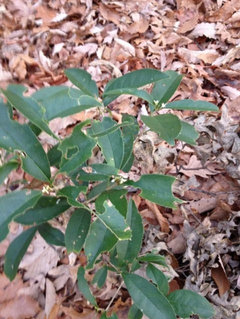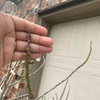Anyone grow Osmanthus Fragrans outdoor in Z7?
kaihui
17 years ago
Featured Answer
Comments (35)
Zinia
17 years agolast modified: 9 years agoRelated Professionals
Glen Ellyn Landscape Architects & Landscape Designers · Sand Springs Landscape Architects & Landscape Designers · White Oak Landscape Architects & Landscape Designers · Burlington Landscape Contractors · Surprise Landscape Contractors · Avocado Heights Landscape Contractors · Belmont Landscape Contractors · Cliffside Park Landscape Contractors · Darien Landscape Contractors · Dudley Landscape Contractors · Medford Landscape Contractors · Ocoee Landscape Contractors · Folsom Swimming Pool Builders · Lisle Swimming Pool Builders · Tucson Swimming Pool Builderslongriver
17 years agolast modified: 9 years agolongriver
17 years agolast modified: 9 years agobamadave
17 years agolast modified: 9 years agoDYH
17 years agolast modified: 9 years agoduckytheloon
17 years agolast modified: 9 years agokaihui
17 years agolast modified: 9 years agolongriver
17 years agolast modified: 9 years agokaihui
17 years agolast modified: 9 years agokaihui
17 years agolast modified: 9 years agogeostv
16 years agolast modified: 9 years agottuccinardi_comcast_net
12 years agolast modified: 9 years agottuccinardi_comcast_net
12 years agolast modified: 9 years agomehitabel
12 years agolast modified: 9 years agoermazi
11 years agolast modified: 9 years agorestoner
11 years agolast modified: 9 years agolou_spicewood_tx
11 years agolast modified: 9 years agoRobert (zone 7a, Oklahoma)
11 years agolast modified: 9 years agomaryoverman
10 years agolast modified: 9 years agoermazi
10 years agolast modified: 9 years agoDave in NoVA • N. Virginia • zone 7A
10 years agolast modified: 9 years agojujujojo_gw
10 years agolast modified: 9 years agorestoner
10 years agolast modified: 9 years agotolip
10 years agolast modified: 9 years agofragrant2008
10 years agolast modified: 9 years agoblycox
10 years agolast modified: 9 years agoermazi
10 years agolast modified: 9 years agorestoner
9 years agolast modified: 9 years agoericta
9 years agolast modified: 9 years agoermazi
9 years agolast modified: 9 years agoermazi
9 years agolast modified: 9 years agoHU-115996753
4 years agoHU-115996753
4 years agoEd Hornyak
4 years ago
Related Stories

GARDENING GUIDES7 New Plants to Grow for Beautiful Foliage
Add color, structure and interest to your garden with these recently introduced plants that sport exceptional foliage
Full Story
EDIBLE GARDENSSummer Crops: How to Grow Tomatoes
Plant tomato seedlings in spring for one of the best tastes of summer, fresh from your backyard
Full Story
SUMMER GARDENINGHow to Grow Basil
Bright color, quick growth and endless uses for cooking make this summer annual a winner in the garden or a pot
Full Story
GARDENING AND LANDSCAPINGGrow a Lush Privacy Screen
No need to wait forever for patio privacy the green way. These 10 ideas will get your screening up and running in no time
Full Story
GARDENING GUIDESWhat Kind of Roses Should You Grow?
Want to add the beauty of roses to your garden? Find out which ones, from old-fashioned to modern, are right for you
Full Story
FLOWERSHerb Garden Essentials: Grow Your Own Fragrant Lavender
This do-it-all plant is ideal for almost any garden, and its uses are abundant around the home
Full Story
FARM YOUR YARD6 Things to Know Before You Start Growing Your Own Food
It takes time and practice, but growing edibles in the suburbs or city is possible with smart prep and patience
Full Story
GARDENING GUIDESGreat Design Plant: Grow Blueberries for Their Fruit and More
Eastern gardeners should consider growing blueberry plants for their delicious fruits, bee-friendly spring blooms and brilliant fall foliage
Full Story
EDIBLE GARDENSHow to Grow Your Own Sweet Summer Crops
This guide will help any gardener get started on growing the freshest warm-season veggies and berries for summer
Full Story
HOUSEPLANTS10 Top Plants to Grow Indoors
Brighten a room and clean the air with a houseplant that cascades artfully, stretches toward the ceiling or looks great on a wall
Full Story







jimshy